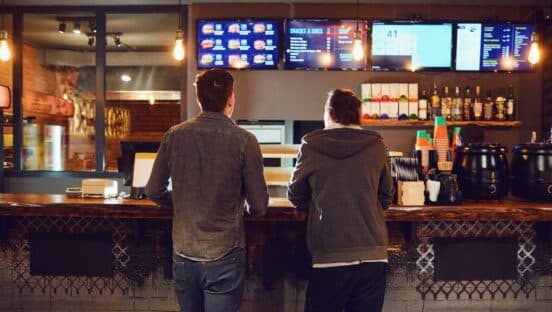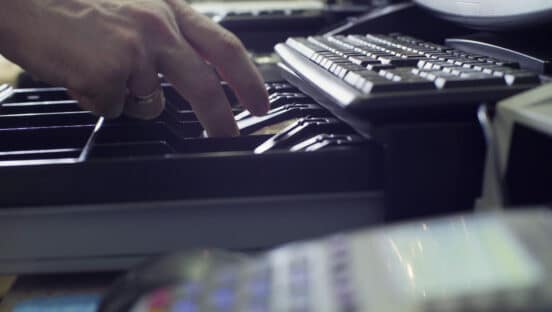Sponsored by Fiserv.
Quick-serve restaurants in today’s economy face a conundrum when it comes to dealing with cash. Statistics show that one third of all quick service customers prefer to pay in cash, and more than 50 percent of customers say they prefer using cash for all transactions less than $25.
But while cash is king of restaurant operators, banks are moving to more digital systems of currency.
“The number one obstacle we’re seeing right now in the industry is that banks have been resistant to handling customers’ cash,” says Dean Fox, director of finance for Paradigm Investments, which owns more than 100 Hardee’s, Jersey Mike’s, and Blaze Pizza restaurants throughout the Southeast. “The banking industry has changed its operations model and banks no longer count cash with employees when they make a deposit. Now, they will collect the cash and the cash will be counted by someone else later. This causes significant delays in cash reconciliations.”
Those delays, Fox says, are costly when it comes to catching issues in reconciliation and theft and add to labor costs when an issue arises and needs to be tracked down. Days of waiting to get information back from the bank means going back and researching the problem. That can lead to a lax attitude by managers and employees when it comes to dealing with cash. And without an immediate and accurate record of the deposit, it’s hard for owners to know exactly what their bottom line is.
Smart safes, he said, are one way to address these quick-service nightmares. Smart safes allow managers and employees to deposit cash and get credit from the bank for that cash until the deposit can be made. Quick, easy, and effective, the smart safes provide security, as well as real-time accuracy in a restaurant’s bottom line.
“We’ve been using these systems for years,” he says. “When you have them in place, your cash issues and your rate of theft both decrease.”
Fox says the cash management systems provide quick-service managers with remote and real-time access to their deposits so if an issue arises, it can be dealt with immediately—which may be a theft deterrent.
“I can dial into that safe and find out in real-time exactly what is deposited and if there are any issues,” he says. “With banking it may take three to four days before I find out there’s a problem. That level of access makes managers and employees think twice about stealing.”
The systems are not without their challenges, Fox says. Many are tied to one armored carrier or bank, making multi-state operations difficult. But systems like Fiserv’s remote cash capture provide a carrier-independent solution that allows the merchants and banks to use their preferred transportation services.
Smart safes also present challenges in having enough change on hand to operate, Fox says.
“In the past, when you’d go to the bank daily to make a deposit, you’d also get your change fund for the day,” he says. “Without that daily banking relationship, it leaves the restaurant space at a disadvantage.”
“The Tidel Series 4 Smart Safe has features a restaurant can add on, like a side vault, or till storage unit, that provides access to the change fund while maintaining a high level of security for the cash deposits. And, having that access on the side prevents managers from having to reach under a smart safe to access change funds, something managers have to do four or five times daily,” Fox says.
Fox says as much as 65 percent of sales for Paradigm’s restaurants are in cash. With banks backpedaling away from cash operations, using smart safes were the best option in terms of time, access, and efficiency.
By Liz Carey













